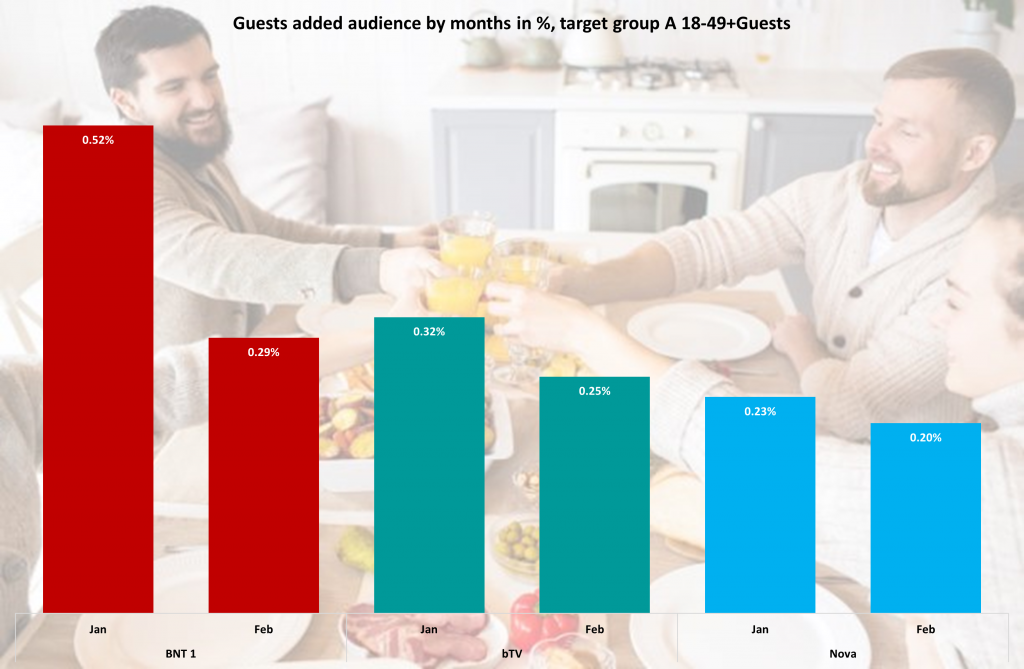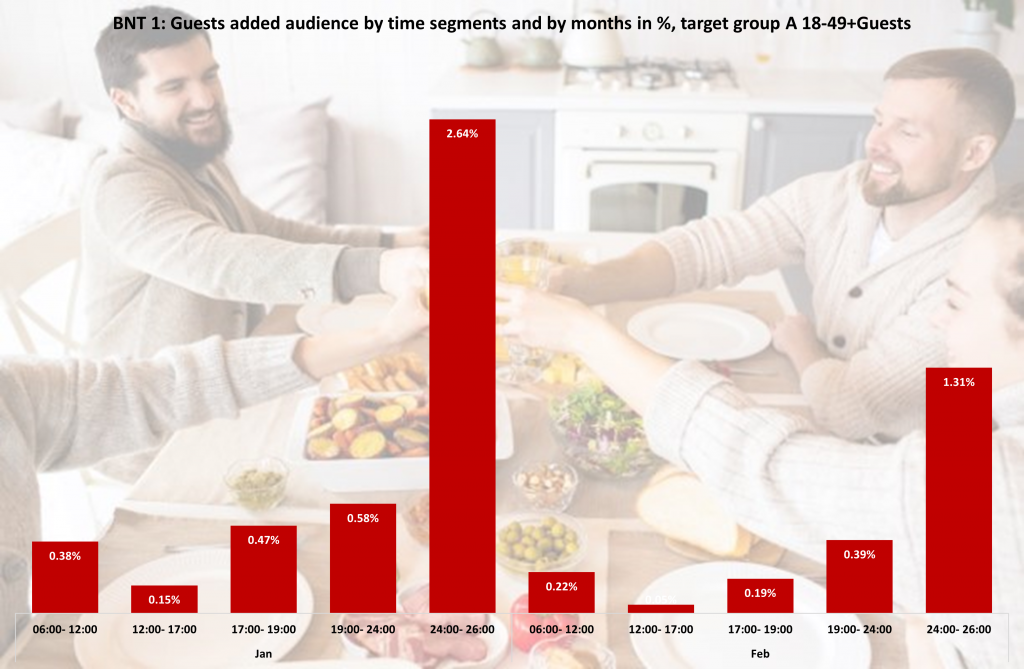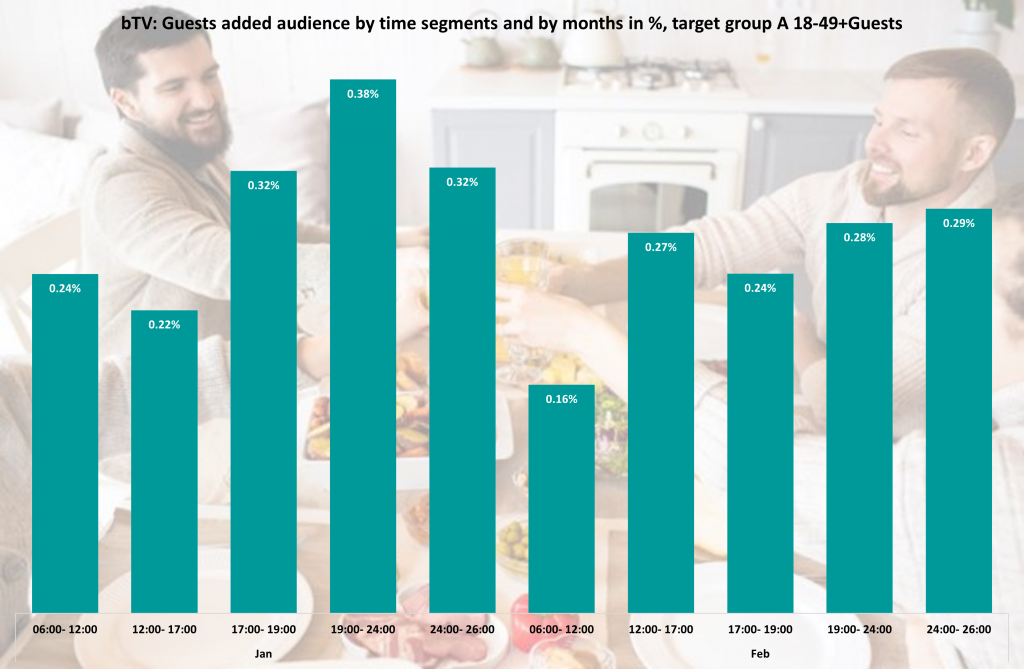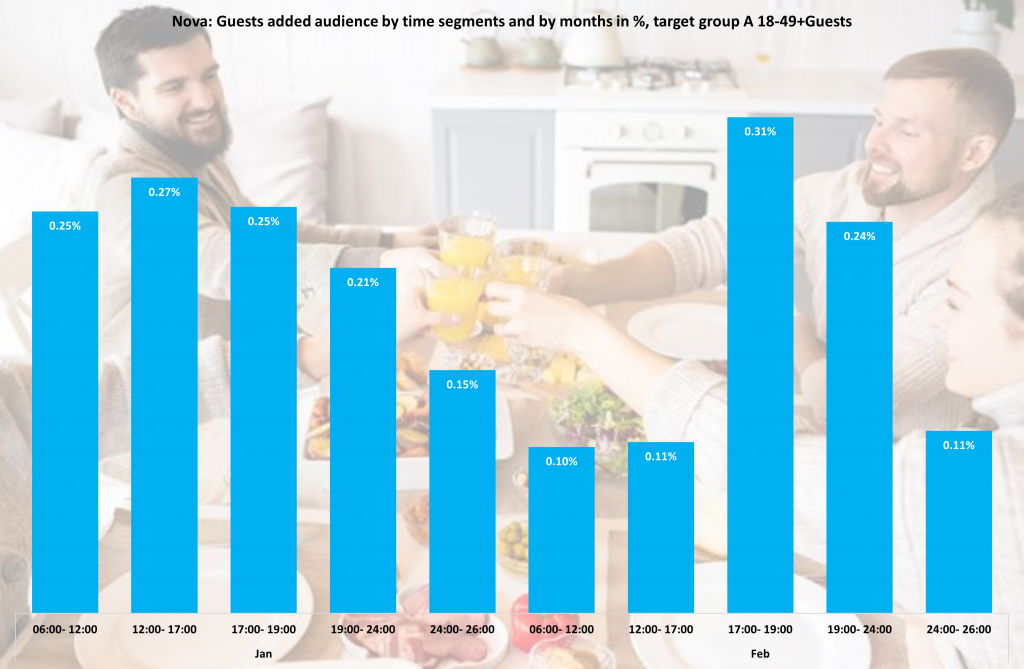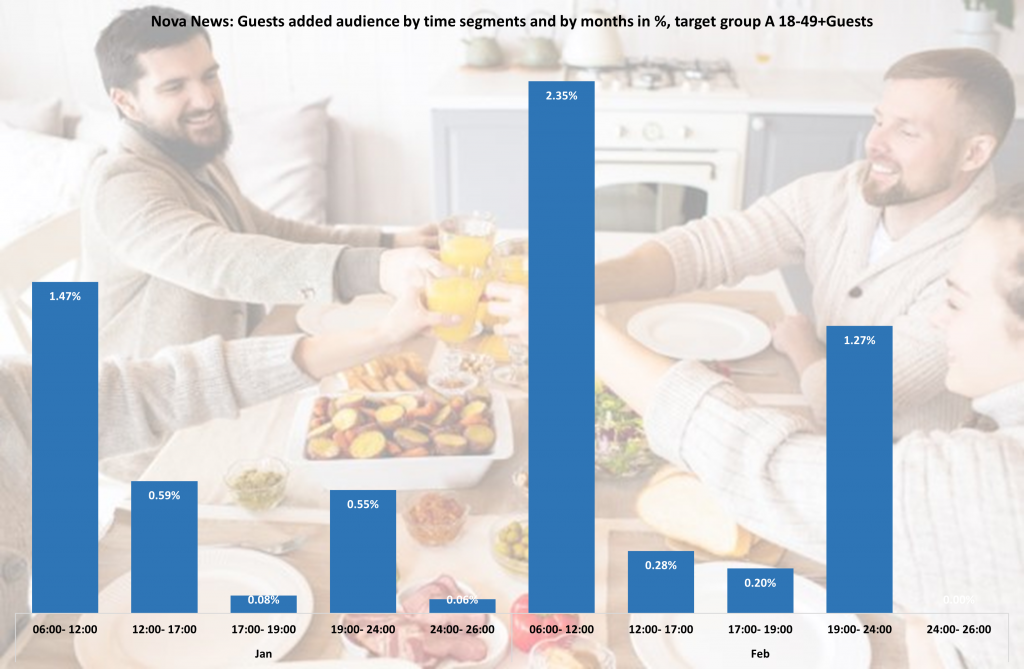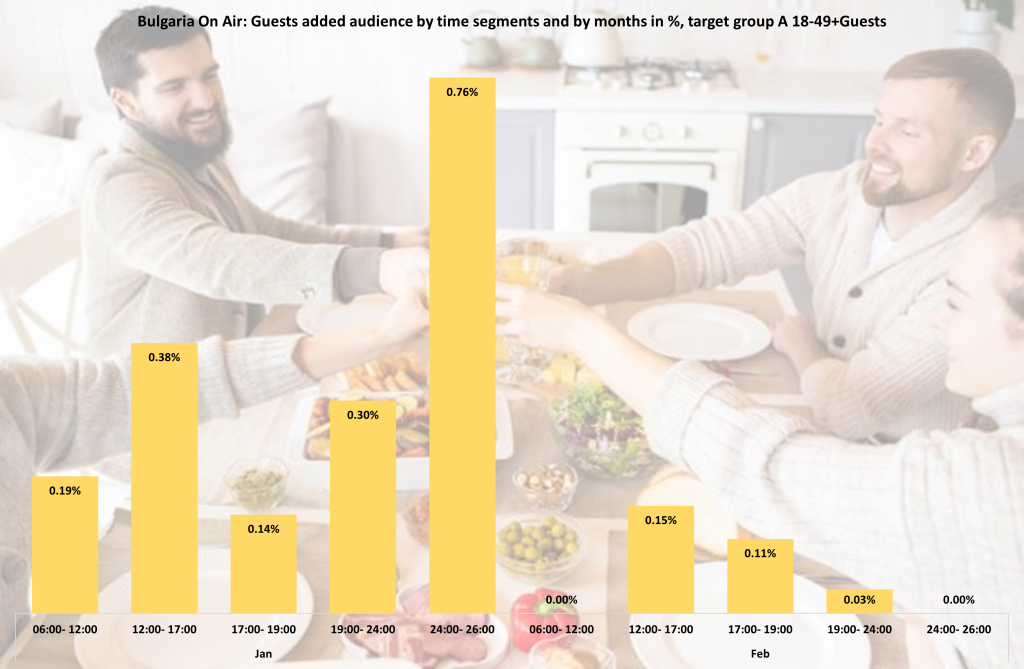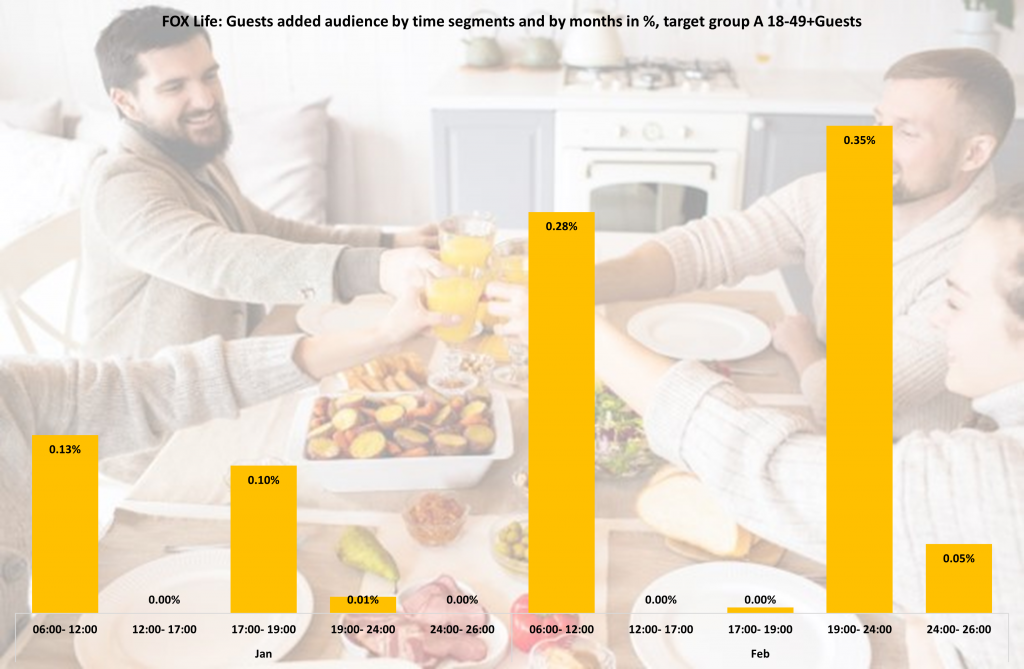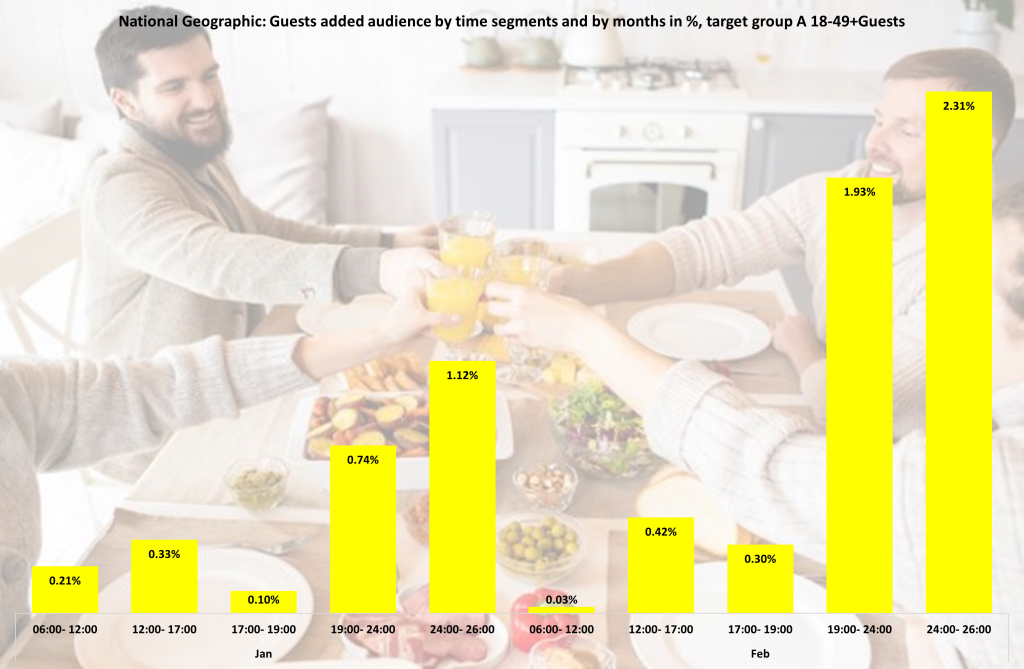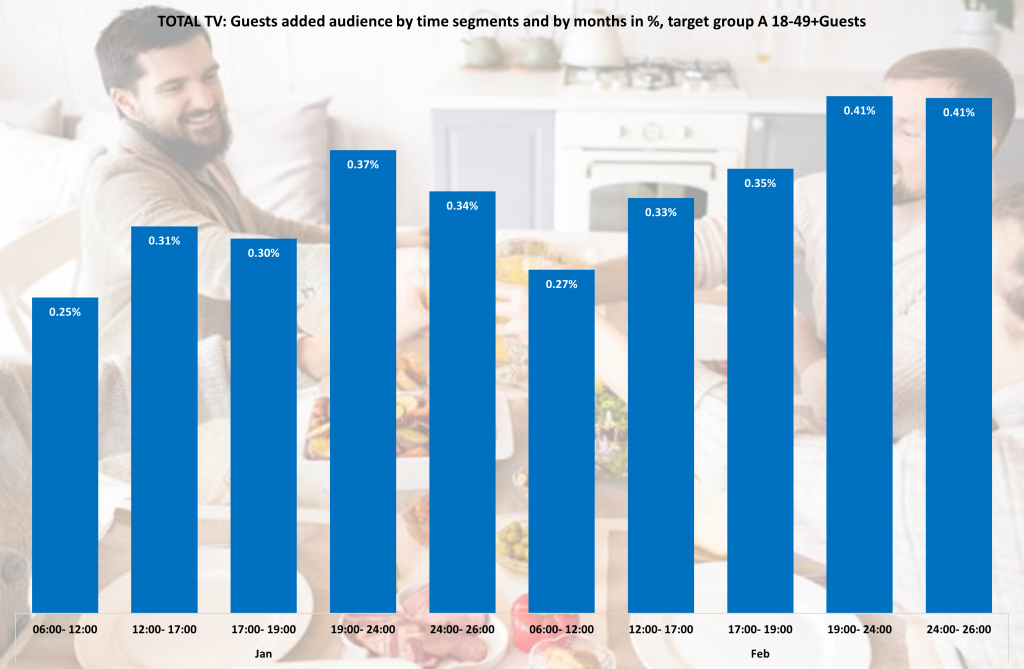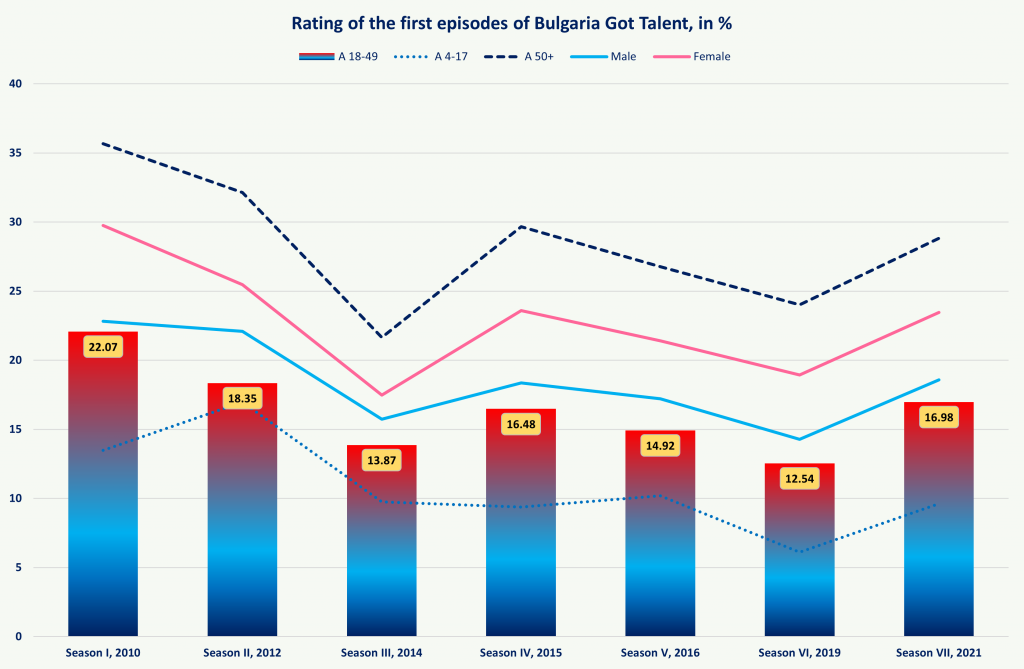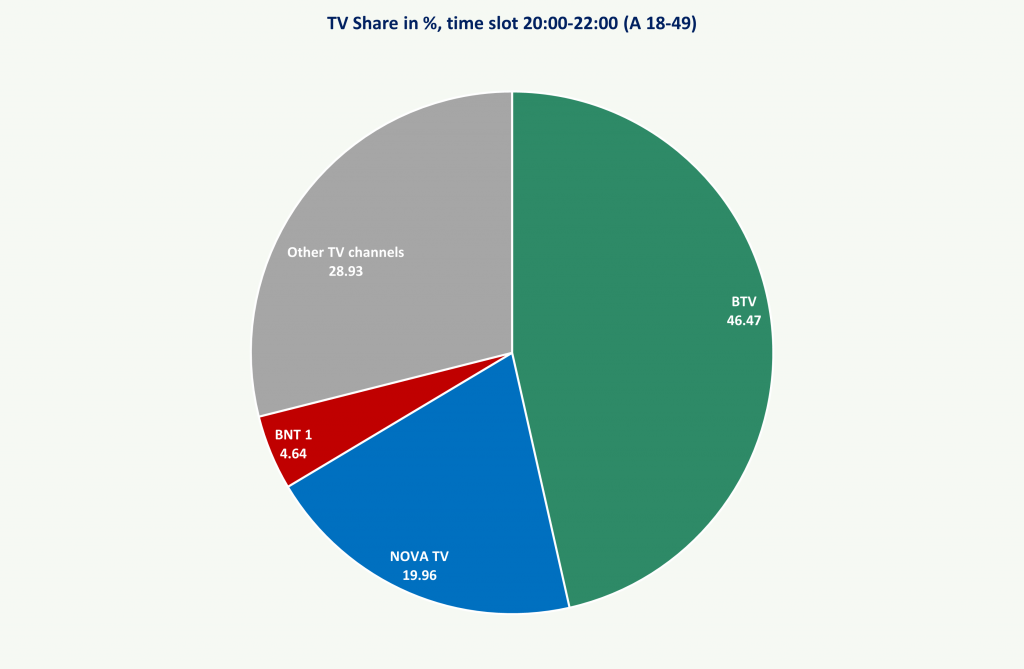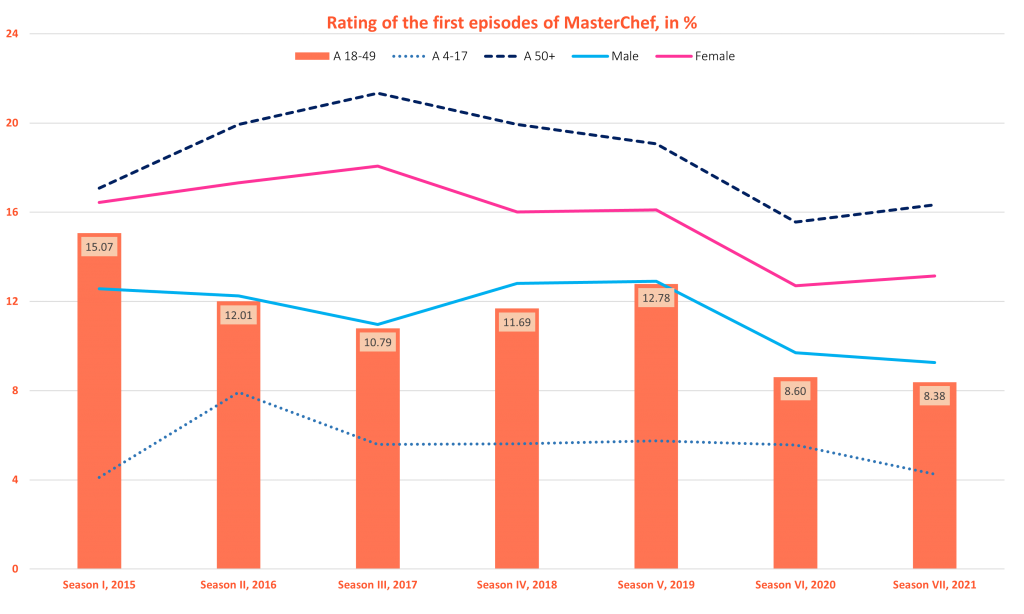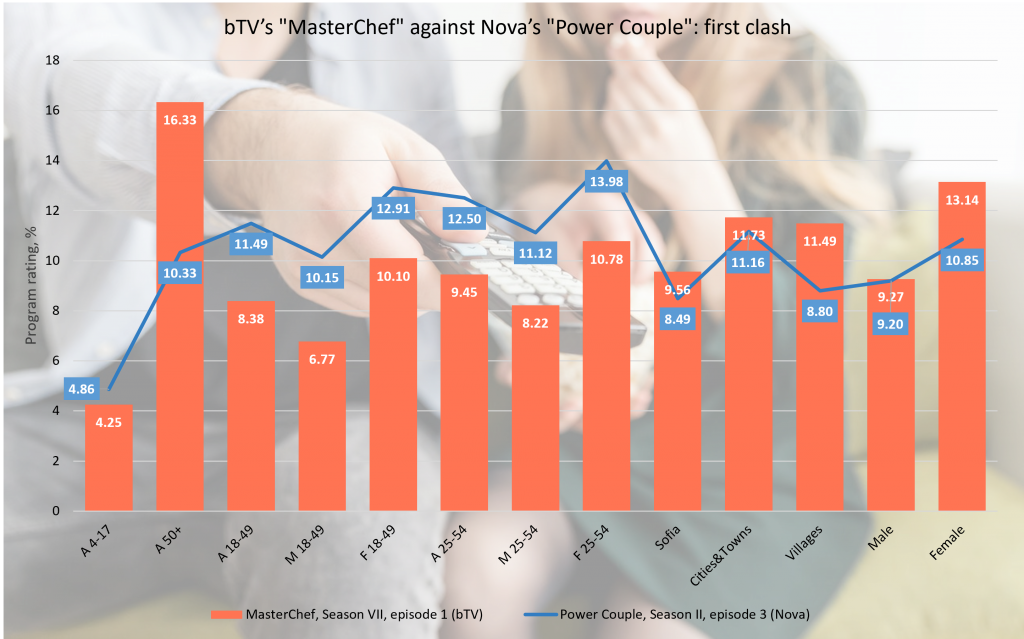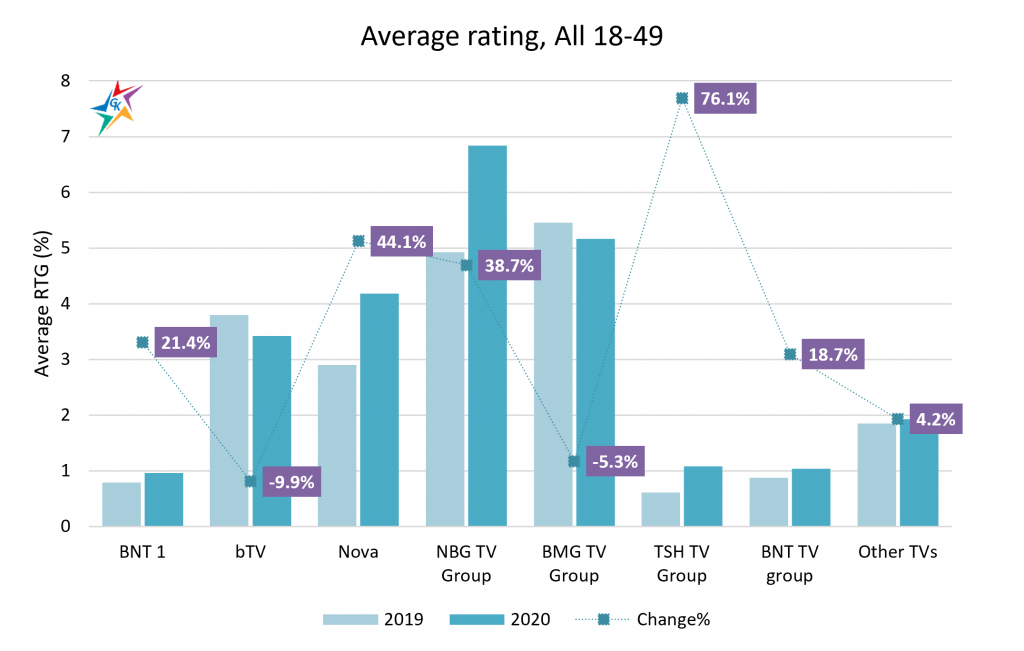Since the beginning of the year, NBG and TSH have resumed reporting of added guests audience in the ratings of TV channels. The other TV groups have so far refrained from introducing this reporting methodology. The practice is not new to the market, but with the transfer of all televisions to a single metric since May 1, 2020, this functionality needed improvement and was postponed. Its purpose is to give us information about how big the added guests audience is and what percentage on top to the standard audience (life + timeshifted) the advertisers pay.
Over the years, everyday life becomes more dynamic, free time, especially in larger cities, becomes more and more insufficient. The last 12 months have been marked by more restrictions in connection with the COVOD-19 pandemic. It was interesting for us to analyze the percentage of the added guests TV audience. For the specific analysis, we focused on the audience all aged 18 to 49, which is a benchmark target group for our market. We merged the TV channels according to the groups to which they belong or represent them and first we looked for dependence by dividing the day into time segments:
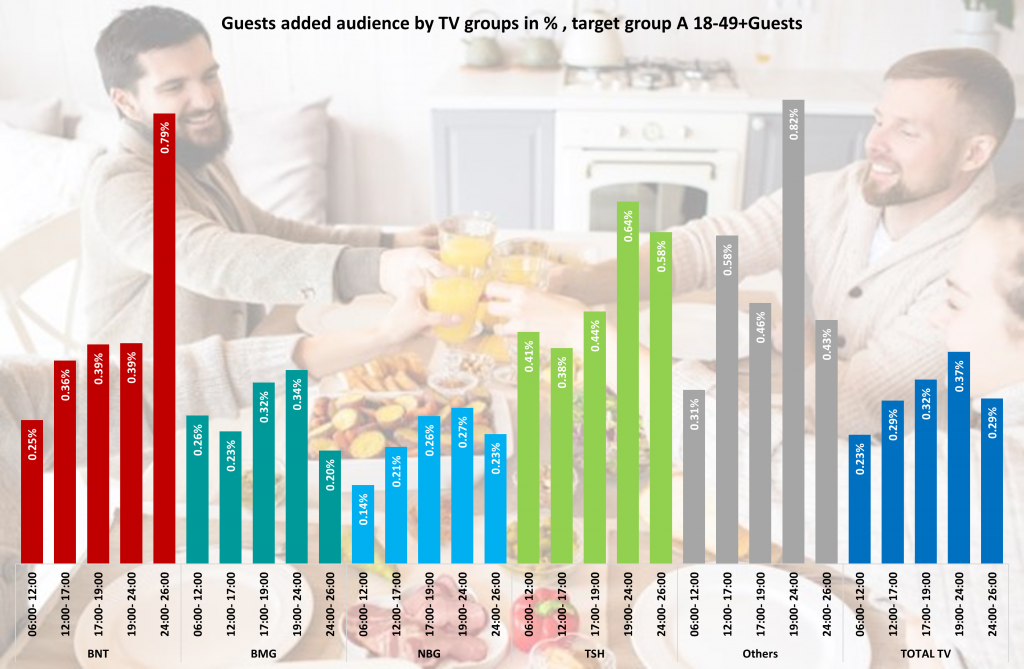
The summary data for all TVs (TOTAL TV) seem logical – before noon and after midnight the guests who watch TV are few and the added audience is in the range 0.23% ÷ 0.29%. This additional audience increases in the afternoon and especially in the hours after 19:00 till midnight. At the same time, the data by TV groups reveal a different picture. Most of the guests watching TV are scattered among the variety of small niche channels and this is typical for all hours of the day. At BNT TV Group, it is surprising to see that the largest share of the audience added by guests was reported after midnight. For BMG and NBG TV groups, the data appear to be balanced within the analyzed time segments, but this is to be expected, as the two TV groups have about a 75% share in target group A 18-49. It is also clear that the added audience of “guests” aged 18 to 49 in the BMG group is more than NBG.
We were curious if the “guests” prefer certain days of the week and here is what the summarized data by TV groups show:
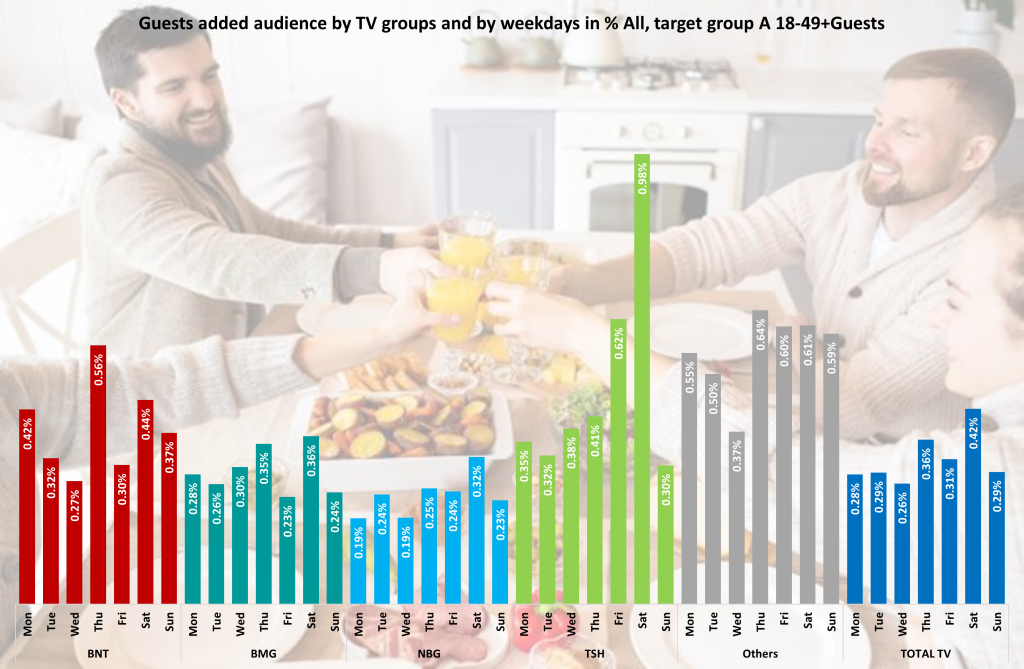
In summary for all televisions, the least “guests” are added to the traditional audience on Wednesdays, and the most on Saturdays. This data filter also shows the “pronounced” interest of the guests in the smaller niche channels. This is quite normal given the fact that these channels offer less engaging content, predetermining the ability of the audience to “split” their attention between the interlocutors in the company and the TV screen. It is noteworthy that BNT is again different from all the others – the audience added by guests in this group is the largest on Thursday, as much as 0.56%. BMG again reports higher percentages of added guests audience compared to NBG in every day of the week.
As the data by TV groups are summarized, we decided to pay attention to the three main televisions in the country (BNT 1, bTV and Nova), that are attracting the largest audience. Also, in this analysis we visualized the data first by time segments:
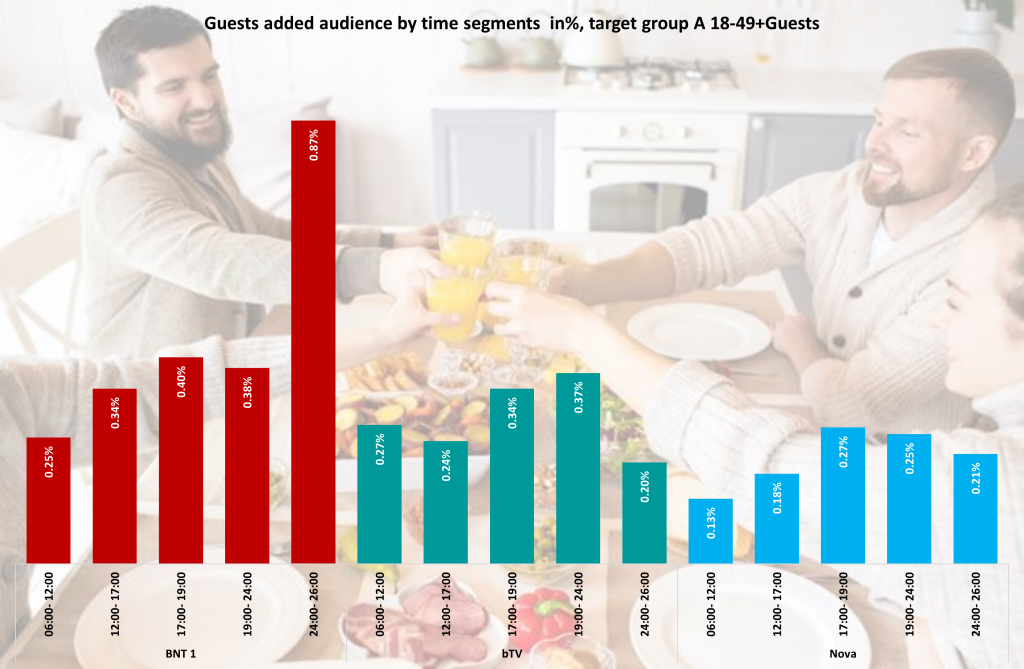
We also added a visualization of the data by days of the week:
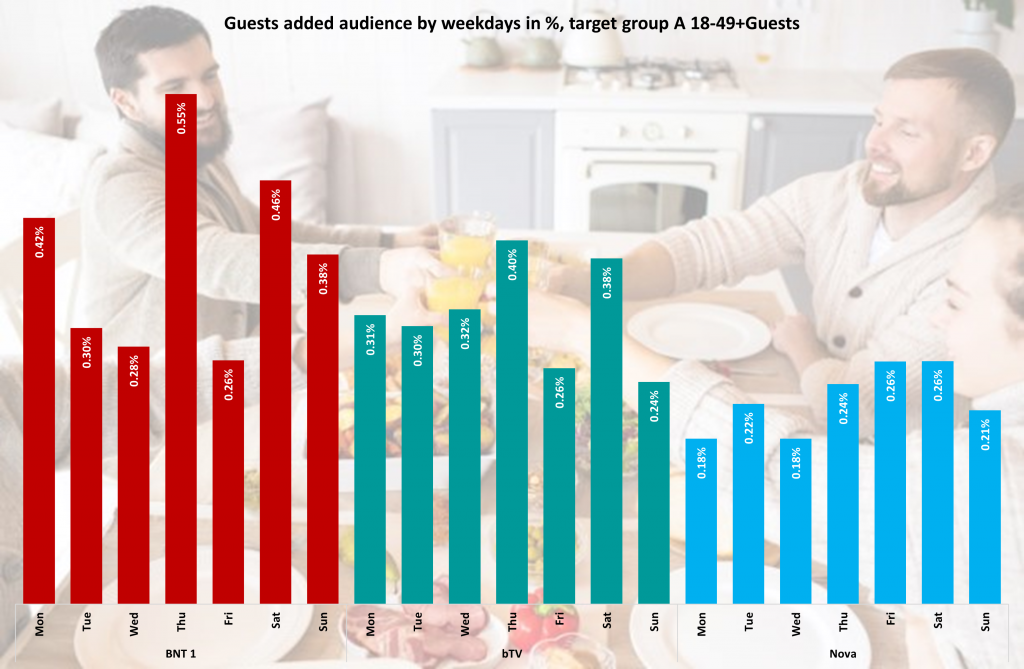
The observations on the three main channels overlap with the conclusions we stated above in the summaries by the TV groups.
For all who are curious to see more and interpret the data independently, we provide additional visualizations in the gallery. Some of the charts will certainly cause confusion and suppose difficult to explain dynamics in the preferences of guests and hosts.
For additional information, please contact our team via the contact form.


